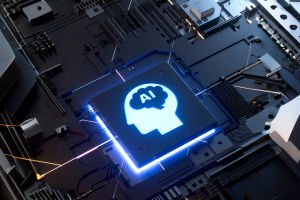The advent of generative artificial intelligence is transforming the nature of many professions and opening new frontiers in human-machine collaboration.
According to the Work Trend Index by the tech giant, the phenomenon of Bring Your Own AI is on the rise, where individuals autonomously utilize AI tools.
In Italy, 73% of individuals already use generative AI at work through non-enterprise applications. While it is challenging to predict precisely which new roles will emerge, studies from the World Economic Forum and Accenture identify opportunities in various sectors.
These opportunities range from programmers developing more efficient algorithms to electrical engineers designing hardware. A key new role will be that of the prompt engineer, tasked with refining inputs provided to generative systems to optimize their responses. Similarly important will be professionals like UX designers, responsible for designing intuitive interfaces to make AI accessible even to non-expert users. The cleanroom developer, a role focused on streamlining corporate data to make it understandable and usable.
Additionally, to prevent the generation of biased or harmful content by generative AI systems like ChatGPT, the figure of a content cybersecurity officer will be crucial. Lastly, the machine learning creative producer will leverage innovative creative production software to rapidly and automatically develop new applications, significantly reducing production time.
Integration of AI in Education
AI is beginning to be taught even in high schools. The applied sciences high school Ettore Majorana in Brindisi and the technical institute Piersanti Mattarella in Modena have been selected by an OECD project for teaching AI to students and teachers.
Meanwhile, the Marconi Pieralisi technical professional institute in Jesi, Ancona, has experimentally integrated artificial intelligence for one hour per week as an integrated subject in the IT and telecommunications track.
In general, those looking to work with AI must possess a range of cross-functional skills and in-depth knowledge of specific areas:
- Programming languages, particularly in Python
- Software engineering
- Deep learning and machine learning
- Neural networks
- Data analysis and management
- Big data technologies and business intelligence
- Virtual and augmented reality
- Image and video analysis (computer vision)
- Text mining and natural language processing
- Robotics and mechatronic mechanics
- Statistics, algebra, and probability calculus
- Digital marketing and web analytics
Italian universities offer numerous undergraduate and graduate courses to acquire these integrated technological, computer, and business skills. Traditional study paths include computer science, electronic engineering, computer engineering, physics, mathematics, statistics, and economics.
There are also interdisciplinary study paths that address artificial intelligence topics. For example, the University of Trento offers a Master's degree in "Artificial Intelligence Systems," while the University of Palermo offers a Bachelor's degree in "Data, Algorithms, and Machine Intelligence." Various first and second-level master's programs exist for postgraduate specialization and advanced training.
Examples include LUISS in Rome with a master's in "Artificial Intelligence - Technologies, Regulation, Ethics, and Society," Politecnico di Milano in "Artificial Intelligence for Public Administration," Università della Calabria in "Artificial Intelligence and Data Science," and Federico II in Naples with "Artificial Intelligence for Human Sciences."
Conclusion: Embracing the Future
In conclusion, the increasing integration of generative artificial intelligence in the workplace and education presents unprecedented challenges and opportunities. Investing in the necessary skills to confront this evolution is crucial to prepare for a future where human-machine collaboration will be part of our everyday lives.


